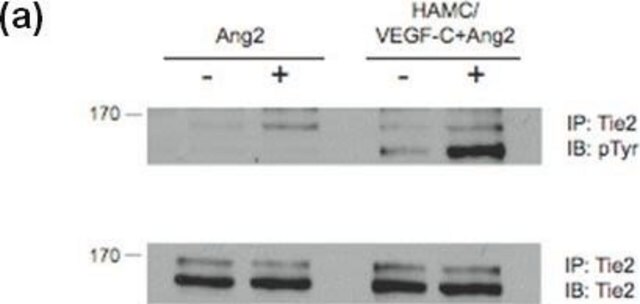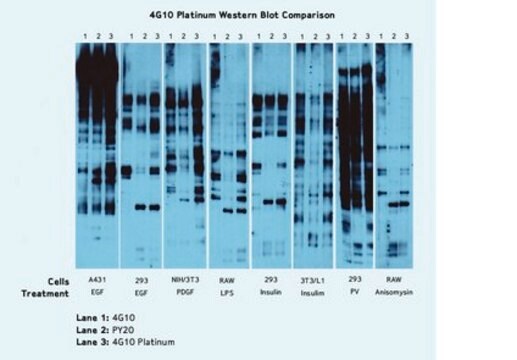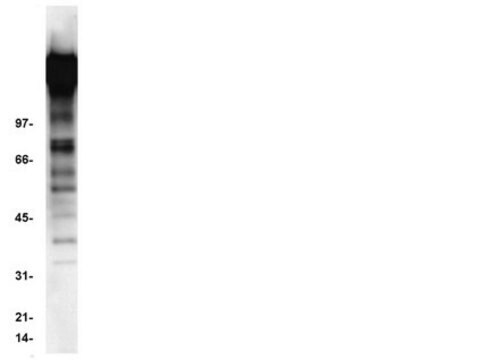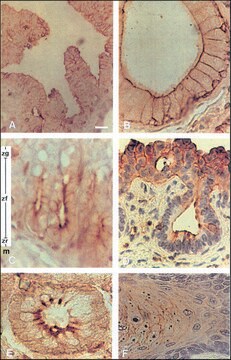16-638
4G10® Platinum, Anti-Phosphotyrosine Antibody, Agarose Conjugate
clone 4G10®, Upstate®, from mouse
Synonyme(s) :
4G10 Platinum Anti-Phosphotyrosine, 4G10 Platinum Antibody, Phosphotyrosine Detection Antibody
About This Item
Produits recommandés
Source biologique
mouse
Niveau de qualité
Type de produit anticorps
primary antibodies
Clone
4G10®, monoclonal
Réactivité de l'espèce (prédite par homologie)
all
Fabricant/nom de marque
Upstate®
Technique(s)
immunoprecipitation (IP): suitable
Isotype
IgG2bκ
Conditions d'expédition
wet ice
Modification post-traductionnelle de la cible
phosphorylation (pTyr)
Informations sur le gène
human ... PID1(55022)
Description générale
Immunogène
Application
Caractéristiques et avantages
Qualité
Twenty μl of 50% slurry of this reagent (10 μl packed beads) was used to immunoprecipitate tyrosine-phosphorylated proteins from 250 μg PDGF-stimulated NIH3T3 cell lysate or EGF-stimulated A431 cell lysate.
Description de la cible
Forme physique
Stockage et stabilité
NOTE: DO NOT FREEZE.
Informations légales
Vous ne trouvez pas le bon produit ?
Essayez notre Outil de sélection de produits.
Code de la classe de stockage
10 - Combustible liquids
Classe de danger pour l'eau (WGK)
WGK 2
Certificats d'analyse (COA)
Recherchez un Certificats d'analyse (COA) en saisissant le numéro de lot du produit. Les numéros de lot figurent sur l'étiquette du produit après les mots "Lot" ou "Batch".
Déjà en possession de ce produit ?
Retrouvez la documentation relative aux produits que vous avez récemment achetés dans la Bibliothèque de documents.
Notre équipe de scientifiques dispose d'une expérience dans tous les secteurs de la recherche, notamment en sciences de la vie, science des matériaux, synthèse chimique, chromatographie, analyse et dans de nombreux autres domaines..
Contacter notre Service technique







